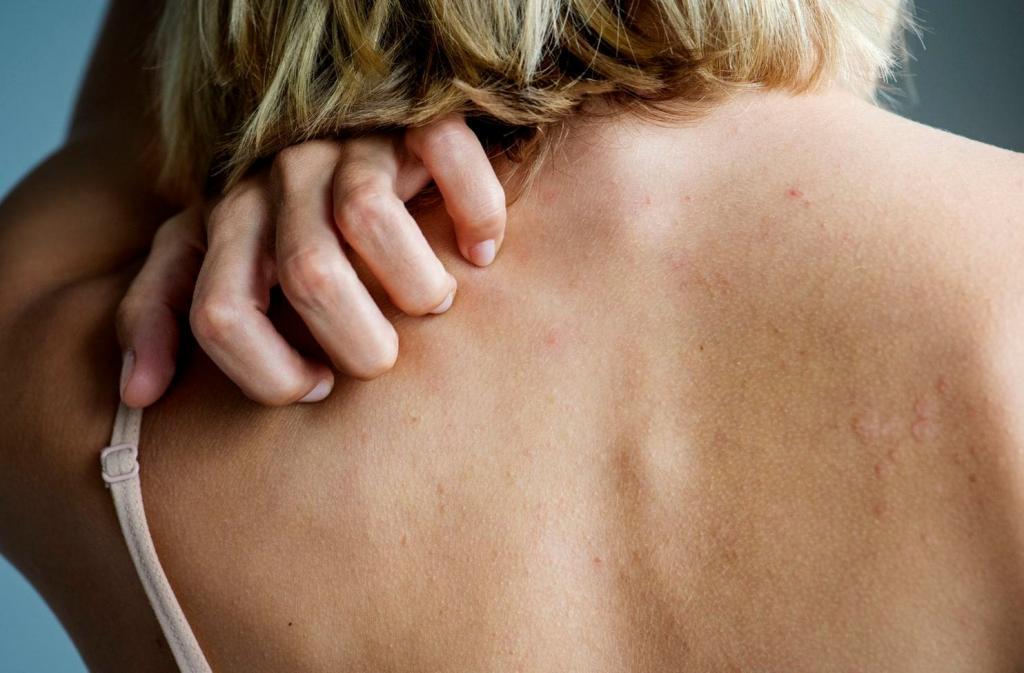

Lichen planus; The skin surface and mucous membranes (such as the mouth and genital mucosa) are a pruritic skin disease that may last for many years, rarely affecting nails and hair. Lichen planus is not a form of cancer. It has no infectious disease and no infectious disease.
Why does lichen planus develop?
The cause of lichen planus disease is unknown. It is thought that the disease develops as a result of an improper function of the immune system. At the beginning of the factors accused as the cause of this situation; . Hepatitis-C infection z which is an inflammation of the liver; certain vaccines and drugs; and amalgam (mercury) filling.
Who is the Lichen planus?
Lichen planus; usually occurs in adults over 40 years of age. It is seen equally in men and women. Approximately every 100 people in the community develop lichen planus.
What are the symptoms of lichen planus?
Lichen planus in skin; itchy, purple-pink color is characterized by a fluffy formation of many small skins, 3-5mm in size, showing glare, because the surface is flat.
These small embossments have thin white lines on the network shaped. Small embossments can combine to form larger plaques or annular lesions in larger areas. Although skin lesions can be mostly symmetrical in any part of the body, they are most frequently located; The inner faces of the hands and ankles. Disease; It can be seen that mainly in the mouth and genitalia, the mucosae and, more rarely, the scalp and the nails. Therefore, the skin of patients with lichen planus should be protected from trauma.
What is the importance of hair, nail and mucosal lesions?
Lichen planus lesions; It can cause long-lasting stains on the skin while healing and itching and appearance disorders. The disease is damaging when it affects the nails and hairs; deformities in the nail may cause permanent hair loss in the form of patches on the scalp. This situation; especially delayed treatment in patients who apply to dermatology specialist. Lichen planus lesions located in the mucosa present a risk for the development of oral and genital mucosa cancers in patients.
How is lichen planus diagnosed?
Lichen planus lesions are easy to be recognized by a dermatologist. However, skin / mucosal biopsy and histopathological examination are required for the definitive diagnosis of the disease. Discontinuation of local and systemic therapies (especially cortisone and the like) prior to biopsy (averaging about 1 week before) will result in more accurate results under the microscope. Therefore, inform your doctor about any medication you are using before the biopsy procedure. Biopsy procedure is usually a simple surgical procedure performed by using local drug needles under polyclinic conditions. Keep your biopsy report carefully to make it easier to monitor your disease.
How does the disease look?
Lichen planus is a disease that usually lasts for a few years and is characterized by attacks. More rarely can last a lifetime; During the course of the disease, the appearance, distribution and treatment need may vary. Rarely, it may also progress to the mucous membranes such as the esophagus and the eye. It is possible to contribute to the regression of the disease by determining and stopping the drugs (especially high blood pressure, heart diseases, malaria and rheumatism drugs) which can cause lichen planus by the doctor or group change.
How is the disease treated?
There is no definitive treatment that completely eliminates lichen planus disease. However, the main goal in the treatment of lichen planus, which is very pruritic, is to relieve the itch and correct the patient's clinical appearance until the disease ends. Since the type of involvement of the disease varies from patient to patient, there is no uniform treatment protocol. Treatment of lichen planus must be planned by a dermatologist.
What drugs are used?
The most frequently used drugs in the treatment of lichen planus; local corticosteroid (cortisone) drugs and antipruritic tablets. In severe disease, immune system regulator drugs such as corticosteroid tablets, vitamin A derivatives and violet and ultraviolet light treatments are used. In lichen planus which is a long-term disease, skin care, trauma avoidance and follow-up are important. Do not go beyond the recommendations of your dermatologist, use your medicines regularly, do not disrupt the doctor's controls.